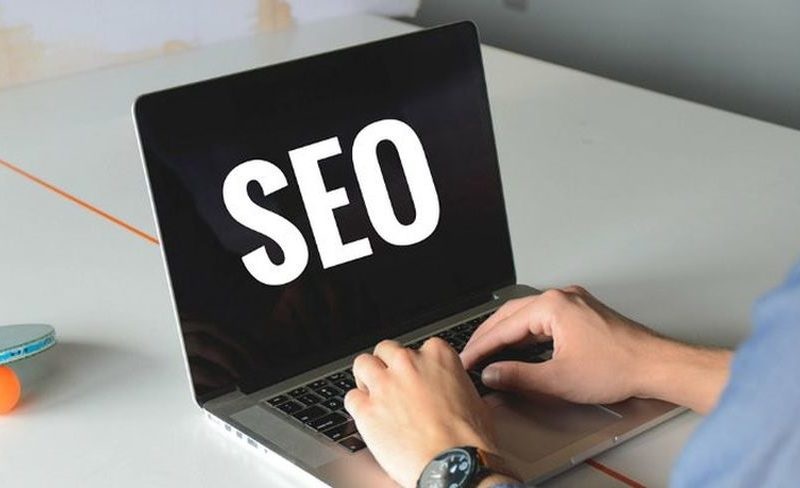
Unleashing the Power of Visual SEO: A Comprehensive Guide to Optimizing Blog Images
In the ever-evolving landscape of digital marketing, search engine optimization (SEO) remains a critical factor in determining the success of your online presence. While much attention is often given to written content, the importance of optimizing images for SEO is frequently overlooked. Yet, in an increasingly visual web, the role of images in boosting your search rankings and engaging your audience cannot be overstated.

Why Image Optimization Matters
Before we dive into the nitty-gritty of image optimization techniques, let’s take a moment to understand why it’s so crucial:
- Improved User Experience: Properly optimized images load faster, enhancing the overall user experience on your site.
- Increased Engagement: High-quality, relevant images can capture and retain visitor attention, reducing bounce rates.
- Better Search Rankings: Search engines like Google consider image optimization when ranking pages.
- Additional Traffic Sources: Optimized images can appear in image search results, driving more traffic to your site.
- Accessibility: Well-optimized images are more accessible to users with visual impairments, broadening your audience reach.
Now that we’ve established the importance of image optimization, let’s explore the various techniques and best practices to supercharge your blog’s visual SEO.
The Ultimate Image Optimization Checklist
1. Choose the Right File Format
Selecting the appropriate file format is the first step in optimizing your images. The most common formats for web images are:
- JPEG: Best for photographs and images with many colors
- PNG: Ideal for images with transparency or fewer colors
- WebP: A modern format that offers superior compression and quality
- SVG: Perfect for logos, icons, and simple graphics that need to scale
Pro Tip: When in doubt, compare your image in different formats and choose the one that offers the best quality-to-file-size ratio.
2. Compress Your Images
Image compression is crucial for reducing file size without significantly impacting quality. There are two types of compression:
- Lossy: Reduces file size by removing some image data
- Lossless: Reduces file size without losing any image quality
Tools like TinyPNG or ImageOptim can help you compress images effectively.
3. Resize Images Appropriately
Uploading images at the exact dimensions they’ll be displayed on your site can significantly reduce file size. Avoid uploading large images and relying on CSS to resize them, as this can slow down your page load times.
4. Use Descriptive File Names
Instead of using generic names like “IMG_1234.jpg”, use descriptive file names that include your target keywords. For example, “red-rose-bouquet-valentines-day.jpg” is much more SEO-friendly.
5. Optimize Alt Text
Alt text is crucial for both SEO and accessibility. Write concise, descriptive alt text that includes your target keywords naturally. For example:
<img src="red-rose-bouquet-valentines-day.jpg" alt="Romantic red rose bouquet for Valentine's Day">
6. Implement Lazy Loading
Lazy loading delays the loading of images that are not immediately visible on the screen. This can significantly improve page load times, especially for pages with many images. You can implement lazy loading using the loading="lazy" attribute or JavaScript libraries.
7. Use Content Delivery Networks (CDNs)
CDNs can help deliver your images faster by serving them from servers closer to your users’ geographic locations. Popular CDNs include Cloudflare, Amazon CloudFront, and StackPath.
8. Optimize Your Site Structure
Organize your images in a logical folder structure and use consistent naming conventions. This makes it easier for search engines to crawl and index your images.
9. Create and Submit an Image Sitemap
An image sitemap helps search engines discover and index your images more effectively. You can create a separate image sitemap or include image information in your existing XML sitemap.
10. Leverage Schema Markup
Implement schema markup for your images to provide search engines with more context about your visual content. This can improve how your images appear in search results.
Comparison: Popular Image Optimization Tools
To help you choose the right tools for your image optimization workflow, here’s a comparison of some popular options:
| Tool | Free Option | Batch Processing | Formats Supported | Compression Type | Integration Options |
|---|---|---|---|---|---|
| TinyPNG | Yes (limited) | Yes | PNG, JPEG, WebP | Lossy | API, WordPress Plugin |
| ImageOptim | Yes | Yes | PNG, JPEG, GIF | Lossy & Lossless | Mac App, CLI |
| Kraken.io | Yes (limited) | Yes | PNG, JPEG, GIF, WebP | Lossy & Lossless | API, WordPress Plugin |
| ShortPixel | Yes (limited) | Yes | PNG, JPEG, GIF, WebP, PDF | Lossy & Lossless | API, WordPress Plugin |
| Squoosh | Yes | No | Various | Lossy & Lossless | Web App |
| GIMP | Yes | Yes (with scripts) | Various | Lossy & Lossless | Desktop App |
| Adobe Photoshop | No | Yes | Various | Lossy & Lossless | Desktop App, Creative Cloud |
Best Practices and Expert Tips
-
Use unique images: Whenever possible, use original photographs or custom graphics rather than stock images. This sets your content apart and can improve engagement.
-
Optimize thumbnails: If you use thumbnail images, ensure they’re optimized as well. They may be small, but they can add up quickly in terms of page load time.
-
Consider image placement: Place important images near the top of the page to increase their visibility to both users and search engines.
-
Use image captions: Captions are often read more frequently than body text. Use them to provide context and include relevant keywords.
-
Implement responsive images: Use the
srcsetattribute to provide different image sizes for different devices and screen resolutions. -
Monitor image performance: Use tools like Google Analytics and Google Search Console to track how your images are performing in search results and on your site.
-
Update and re-optimize regularly: As new compression technologies and best practices emerge, revisit and re-optimize your images periodically.
FAQs: Answering Your Burning Questions
Q1: How does image optimization affect Core Web Vitals?
A1: Image optimization plays a crucial role in improving Core Web Vitals, particularly Largest Contentful Paint (LCP) and Cumulative Layout Shift (CLS). By reducing image file sizes and implementing lazy loading, you can significantly improve LCP scores. Properly sizing images and using aspect ratio boxes can help prevent layout shifts, improving CLS scores.
Q2: Can I use AI-generated images for SEO?
A2: While AI-generated images can be a useful tool, it’s important to use them judiciously. Search engines prefer unique, high-quality content, including images. If you use AI-generated images, ensure they’re relevant, high-quality, and ideally customized or edited to fit your specific needs. Always complement them with appropriate alt text and descriptive file names.
Q3: How often should I audit my site’s images for optimization?
A3: It’s recommended to conduct a comprehensive image audit at least once every six months. However, for high-traffic sites or those frequently adding new content, more frequent checks (e.g., monthly) can be beneficial. Regular audits help ensure all new images are optimized and allow you to take advantage of the latest optimization techniques and technologies.
Q4: Are there any downsides to over-optimizing images?
A4: While image optimization is generally beneficial, over-optimization can sometimes lead to issues. Excessive compression can result in poor image quality, negatively impacting user experience. Similarly, keyword-stuffing in file names or alt text can be seen as spammy by search engines. Strike a balance between optimization and maintaining image quality and natural keyword usage.
Q5: How do I optimize images for voice search and AI assistants?
A5: To optimize images for voice search and AI assistants, focus on descriptive, conversational alt text and file names. Use natural language that answers potential voice queries. For example, instead of just “red rose bouquet”, use “What does a romantic red rose bouquet for Valentine’s Day look like?”. This approach can help your images appear in voice search results and be more easily interpreted by AI assistants.
Conclusion: Elevating Your Visual SEO Game
Optimizing your blog images for SEO is no longer optional in today’s visually-driven digital landscape. By implementing the strategies and best practices outlined in this guide, you can significantly improve your site’s performance, user experience, and search engine rankings.
Remember, image optimization is an ongoing process. Stay informed about the latest trends and technologies in visual SEO, and don’t be afraid to experiment with new techniques. Your efforts in optimizing images will not only please search engines but also create a more engaging and satisfying experience for your visitors.
As you embark on your image optimization journey, keep in mind that the goal is to strike a balance between visual appeal, performance, and SEO benefits. With patience and persistence, you’ll soon see the positive impact of your optimized images on your overall digital marketing efforts.
For more insights on SEO and digital marketing, check out these valuable resources:
And don’t forget to join the conversation in SEO communities like Reddit’s r/SEO or the WebmasterWorld Forums to stay up-to-date with the latest trends and share your experiences.
By mastering the art and science of image optimization, you’re not just improving your SEO – you’re creating a better, more accessible web for everyone. So go forth and optimize those images – your users (and search engines) will thank you!

Tool Web
Founder
There are times when the loudest truths lie within the quietest minutes. Amidst this mayhem, it is frequently small, overlooked aspects that speak out the most important lessons ever. Look out for these faint indicators since they could be all that you require for an important move in life.




